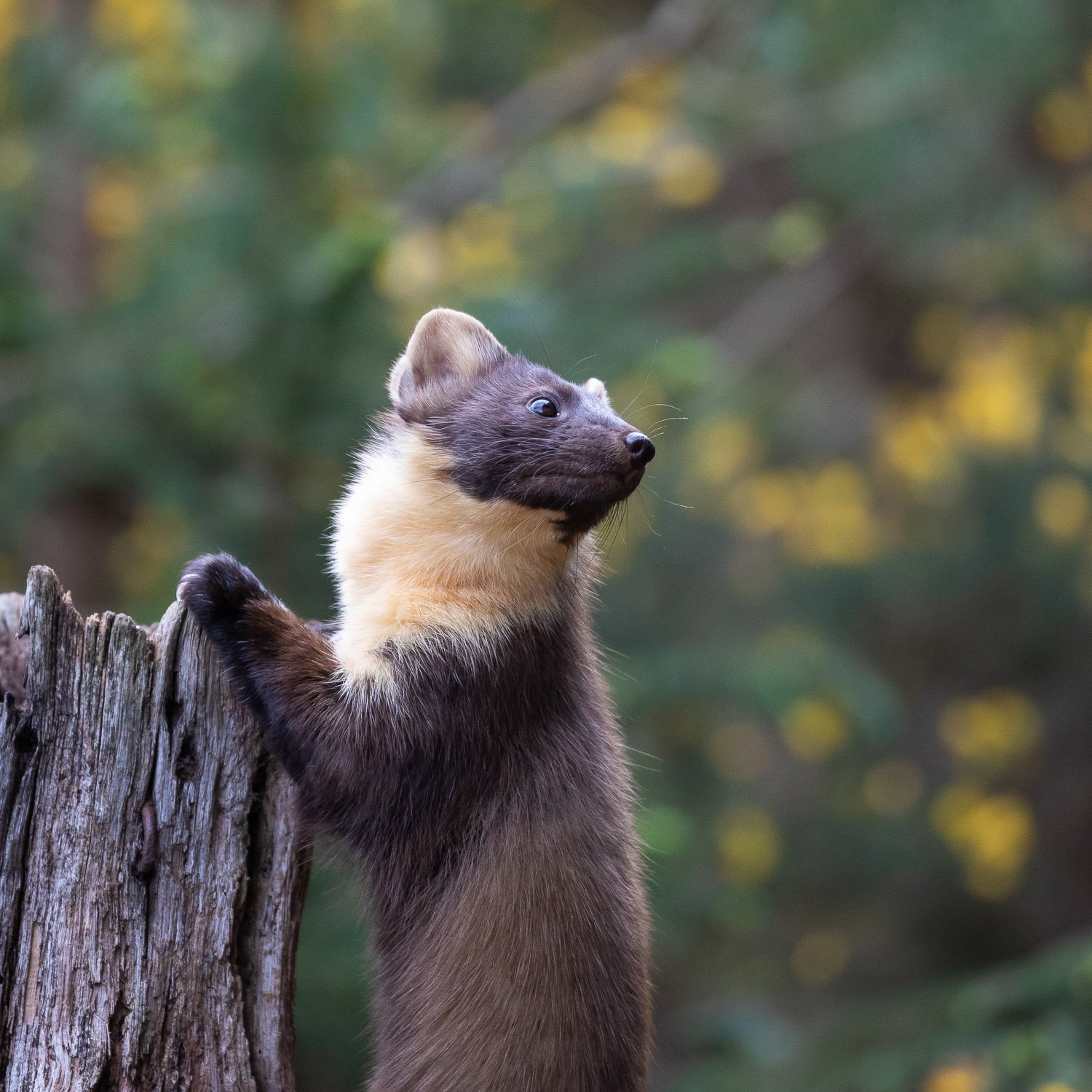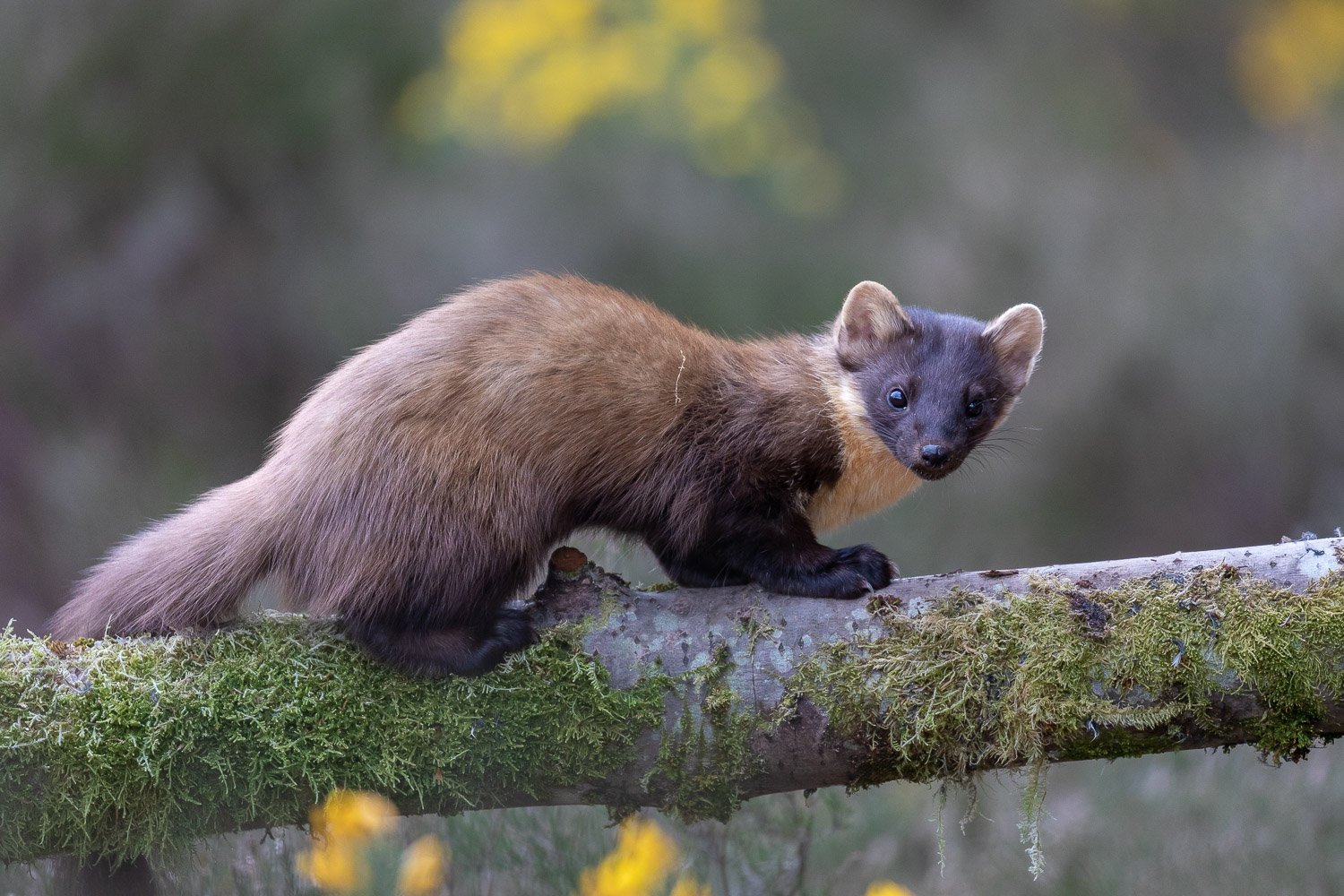Hide and seek
The middle of October! How did we get here so soon? I was horrified to see it is about 5 months since I last did a blog, despite all my good intentions. It’s been a busy few months with lots of work and some travel, which I will share later.
One of the things I have done is spend a couple of days in a local hide photographing a pine marten and red squirrels. Living where I do and getting the odd glimpse of both species, I forget that most people don’t have that privilege and, dare I say it, don’t even know of their existence.
The hide, run by local photographer James Roddie, is located in woodland not that far away from where I live. Before walking into the hide, James gives you information and instruction on what is likely to happen, how you should behave etc. Essentially, you need to be as quiet as you can be, but, believe me, it’s amazing how noisy everything you do sounds when trying to be quiet! And then you wait for the wildlife to put in an appearance and, in the case of the pine marten, wait and wait and wait…….
We waited for 5 hours, with the occasional visit from a red squirrel, and then suddenly - bang - she was there! Just as James had told us: with no warning she was on top of a tree stump trying to retrieve the egg that had been left for her. As instructed, we didn’t take any photographs; we just sat and watched as she worked the egg out of the stump and ran off with it, unbroken, to feed her kits. What a beautiful creature! And so close!
And then it was back to waiting and hoping she would come back. James had told us that her usual pattern was to return about half an hour or so after collecting the egg. Luckily for us, she did come back and hung around a little longer as she moved round the site feeding for herself. This time we did take some images…and then she was gone. A long wait for a relatively short appearance by the pine marten, but they are incredibly shy animals so to have had this time with this particular female was such a privilege and absolutely worth it.
As you can see from the images, the pine marten is cat-sized. It’s a member of the weasel family and dark brown fur covers its long body except for a large, creamy-white patch at the throat. They were once found across Britain, but their numbers crashed in the 19th century, chiefly because of deliberate persecution by gamekeepers on sporting estates. From the late 20th century, the species expanded south and eastwards from core areas in the North West Highlands. Though it has recovered a little from a dramatic decline, the species is still rare. Scotland’s population is estimated at 3,700 adult pine martens. The species was given full legal protection in 1988.
Pine martens are fantastic climbers preferring to live in woodlands in holes in trees, old squirrel dreys or old birds’ nests. They feed on small rodents, birds, eggs, insects and fruit. As pine martens will eat squirrels, it is understandable that we didn’t see that many on our pine marten day. They are fabulous creatures to watch so I decided to go back for another day in the hide outwith the pine marten season. And the squirrels didn’t disappoint. We had a full morning of them bounding in and out of the site both feeding on and burying the hazelnuts put out for them.
Have you heard of the Highland Squirrel Club? Probably not.
The red squirrel is the UK's only native squirrel species, and was once a common sight. But for decades, since the introduction of grey squirrels in the late 1800s, red squirrels have been in decline. These days, the Highlands of Scotland are considered one of the last strongholds for red squirrels. However, in the 1800s, they were extinct, or on the edge of extinction, in the Highlands due to the loss of their woodland habitat.
In 1844, Lady Lovat of Beaufort Estate, near Beauly succeeded in getting the government to re-introduce red squirrels to the Highlands, possibly as a 'fashion accessory' for the gardens of the country estates. However, by the 1900s, their numbers had multiplied rapidly and, spreading out from the boundaries of the estates where they had been introduced, they were blamed for causing damage to Scots pine and other conifers.
In response to the damage caused to woodlands, a Highland Squirrel Club was formed in 1903 with the purpose of hunting, trapping, and killing the squirrels, which they carried out for 43 years. By 1946, they had killed 102,900 squirrels and paid out £1,504 in bounties. Tails were submitted as proof. Ironically, Beaufort Estate was where the most reds were killed - a total of 22,766. A letter from the estate's office dated 31 December 1920, notifies the club secretary that a box containing 523 squirrel tails had been sent to him by train.
In a final irony, the same estates where reds were actively hunted down now offer a haven for the species. There are about 121,000 red squirrels in Scotland (75% of UK total), but grey squirrels are far more numerous and continue to threaten the survival of reds. Only the Highlands, most of Grampian, Argyll and northern Tayside remain completely ‘grey-free’ and without sustained action, it is predicted that red squirrels could become extinct on mainland Scotland within 50 years.
I’ll leave you with some fun squirrel facts:
~they have four fingers, five toes and double-jointed ankles which allow them to hang upside down
~they use their tails to communicate with each other
~they can tell whether a nut is good or not by smell
~individuals are right or left-handed when eating a pine cone
~they can swim and hang upside down.
Amazing creatures!














